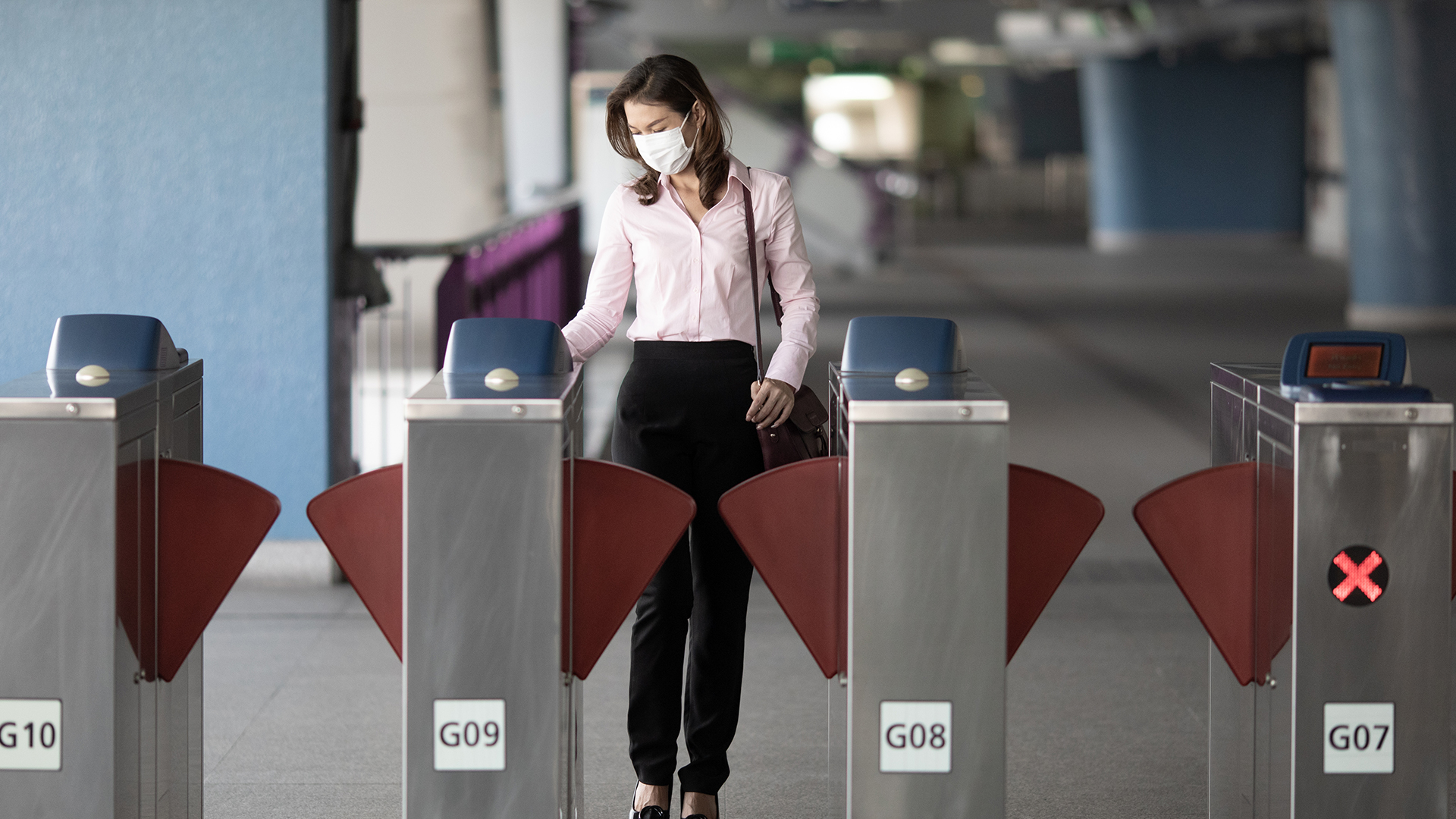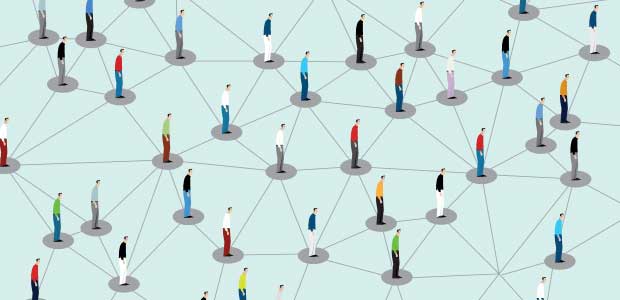Professional Security and the Pandemic
How your organisation’s physical security can adapt to unusual times.
As we’ve seen over the past few years, a state of pandemic can throw the world off-balance. Australian businesses and organisations have had to adapt to ensure continuity and the safety of their people during an event that the vast majority of us find unprecedented.
While we’re grateful that vaccination programs have commenced in many parts of the world, we also understand that the COVID-19 pandemic won’t be the last time that something changes our way of life.
Some might see this as a temporary break in the status quo. We, however, have thrown our lot in with the world’s top companies and analysts in treating this as an opportunity to expand our concept of disaster-proofing: many of the changes that COVID-19 brought are here to stay, and that could be a very good thing.
In this article, we’ll examine the impact of the pandemic on the professional security industry. You’ll find that apart from adapting to the virus, our ability to serve you and your organisation has undergone significant improvement.
Recap: How has COVID-19 affected security?
In the wake of the virus, the most widely reported priority among physical security professionals was managing the health and safety of employees & visitors — 20% of those surveyed by Genetec in their State of Physical Security 2020 report listed this as their top challenge.
The pandemic changed the management of people and how they interact with both public and private facilities — crowds, traffic, and access control — by introducing the complexities of viral transmission. Beyond comfort and security, social distancing became an inviolable goal. Manual systems of visitor and employee management were rendered outdated, seemingly overnight.
Likewise, elements that’d seek to rob, damage, or otherwise victimise organisations remain a threat despite the crisis. Emptier streets mean fewer witnesses, and the general state of disruption could prove a convenient cover.
As conditions changed, many organisations sought to leverage the technology and skills they had on hand. Others recognised a need to invest in new technologies to reduce the need for physical staffing or ensure compliance with public health recommendations.
All told, security companies and their customers have had to deal with increased spending on skills and equipment, on top of reduced operational capacity. To say it’s been challenging would be an understatement, but Australia’s business community is nothing if not tenacious.
Evolving Tactics and Technology
In response to the challenges of the pandemic, corporate security providers have introduced new processes and tools.
Access Control
Access Control involves monitoring your facilities’ access points and controlling the flow of people. Before the pandemic, identity verification, authorisation, occupancy, identity verification and efficiency were core considerations — as long as you don’t receive unwanted or unverifiable visitors or find your main portals clogged with visitors, you’re golden.
The virus changed the dynamics here by requiring both physical distancing between visitors & the ability to contact trace should a facility be exposed to COVID-19.
Procedurally, this means that employees and security personnel must be trained to enforce distancing measures and respond to health-related situations. They needn’t become doctors overnight, but they should be able to assist in maintaining the safety of employees and minimising the risks of transmission.
Surveillance & Monitoring
A long time ago, the wisdom was that the more security personnel you had on-site, the better protected your organisation would be. However, in recent years, even before the pandemic, digital surveillance tools reduced the need for additional staff at your locations.
Remote monitoring extends beyond video surveillance and can incorporate Access Control, Number Plate Recognition, Video Analytics and communications.
They were helpful before COVID-19, but today it’s essential for a few reasons. Firstly, removing the human element from the monitoring process reduces the risk of infection — the fewer people at your locations, the better. Second, many remote monitoring tools allow for a degree of automation: instant alerts, automated gatekeeping, and other processes improve the efficiency of your security systems.
Even after the threat of the virus is successfully mitigated, automation is a principle that’s quickly catching on. In 2020, 31% of businesses had automated at least one function. As machine learning and AI improves algorithmic development, automation becomes more advanced, and we can expect to see organisations of all sizes adopting the technology and chasing its benefits.
Situation Prevention and Response
When you hire a security company, you expect it to handle your brief with professionalism and care. Unfortunately, those expectations haven’t changed with the pandemic, which means the pressure is on for security companies to deliver a high standard of service during extraordinary times.
In our experience, this involves a balancing act between following expert advice and accomplishing the things we need to get our jobs done. For customers seeking professional security, it’s essential to vet for adaptability & years of experience — firms that have been around longer have naturally had to learn and adjust in the past.
Likewise, a record for customer service will go a long way: global crises are complex all around, which means your operational security relies on the ability of your provider and their staff to keep their heads. Again, vetting for experience is essential: security companies that have been around having learned from situations in the past.
What Changes are Here to Stay?
Because we won’t be trapped in a pandemic forever, there are plenty of things that the world business community has spent on that won’t become permanent fixtures. Temperature scanners and remote work set-ups aren’t likely to persist if dropping them saves money in the long term.
There are two notable changes, however, that we believe are here to stay.
Remote and Automated Security
It’s hard to reverse the growth of technology, especially when the newest innovations bring major improvements. Nevertheless, the COVID-19 crisis illuminated a handful of compelling use cases primarily responsible for developing enterprise technology over the past two years. Microsoft Mesh, for instance, was a direct response to the need for better virtual collaboration.
Physical security is no exemption from this trend.
The need for physical distancing introduced the need for advancements in remote monitoring: the ability to keep an eye on your facilities without bringing in additional people. Of course, the immediate value is to prevent infection. Still, after the pandemic runs its course, you can benefit from a security ecosystem that runs without the need for additional staff. On top of this, remote monitoring tools are also more reliable — people get tired or distracted, but cameras don’t.
Access Control has also grown to become contactless whenever possible. Mobile Access credentials reduce the possibility of contact transmission because they can be wirelessly provisioned, as well as being quick and convenient.
Underpinning all these developments is automation. As we’ve mentioned, security processes can run independently of human input thanks to developments in video analytics software. For instance, your monitoring systems can automatically flag unauthorised access to restricted areas or discover the presence of people within your external perimeter.
Removing human error from the equation drastically minimises your attack surface, leaving your on-premise security teams to perform more strategic tasks. Better still, it allows you to collect data for later analysis: you can analyse peak hours without the need for manual head counting, and automate reporting to facilities staff without them having to compile it.
We see no reason why pandemic-led shifts toward remote and automated security technology should go backwards.
Cyber Security Matters
Research firm Gartner suggests that enterprise spending on devices and enterprise software will be the fastest-growing segments of technology spending in 2021. Now, while the majority of an organisation’s IT infrastructure may have little to do with physical security, the interconnected nature of today’s digital ecosystems means that any vulnerability in your network could in turn compromise your locations’ physical security.
Cloud-based video analytics or even IP access management hosted in ways that require a network connection. Put simply, today’s IT breach could reasonably pave the way for tomorrow’s physical security breach.
While IT isn’t the remit of your average security company, any responsible security systems integrator will come prepared to assist your in-house IT specialists in assessing and mitigating the risks brought about by network-dependent security infrastructure.
Physical & logical security is converging. Putting IP cameras and access control readers, along with other ethernet connected security devices onto the network, bring threats along with opportunities, and the overall digitisation of modern organisations make cybersecurity a joint effort between all parties.
Again, the growth of technology might be slowed down by events like the pandemic, but we guarantee that people won’t start going backwards any time soon.
If you’re interested to learn more, we’ve written dedicated articles on the future of security technology. Check out our 2021 Guide to Security Equipment and our list of 5 Reasons Why Cybersecurity and Physical Security Go Hand-in-Hand.
Key Takeaways for the Future
Trust the Experts
First, COVID-19 proved that the defining feature that separates successful crisis responders from those who fail is a willingness to listen to professional advice. In the same way that the medical community provided key guidance for the pandemic, there will always be a group of experts who are best equipped for a given situation.
Professional security teams can promise two things: (1) to do their utmost to balance your operational needs with your security needs, and (2) to remedy gaps in their knowledge whenever needed.
The same goes for most of the world’s experts: take the free advice, study it, and give it due consideration when reacting to the unexpected.
Be Agile and Adaptable
Second, the best-laid plans are only as good as the challenges they address. When situations change, agility and adaptability will prove most essential: we’ve seen it happen as the world’s business leaders shifted their strategies to address the impact of the pandemic.
Don’t get us wrong: you should never stop planning to the best of your ability — in fact, our approach has always been to plan for the situations we can anticipate. But when faced with problems we didn’t expect, we try not to let what we’ve planned to get in the way of what needs to come next.
Be agile, don’t marry your plans, and keep your reflexes sharp!
Resilience is Key
While on the subject of planning, we find that many organisations could benefit from a greater focus on resilience. While the default instinct is to build operational capacity (i.e. chase after the next win), it’s just as important to build your ability to withstand crises when times are stable.
Invest in disaster preparedness, building more robust systems, and connecting with the most qualified providers. The results won’t show immediately, but as the old saying goes, you can’t put a price on safety.
Conclusion
Few could have anticipated how the last two years would have played out. Those who are thriving today were able to think on their feet, and prioritise the health and safety of the people who make their operations possible.
The most important lesson that COVID-19 taught us is the value of security. An investment in safety is an investment in continuity — conversely, ignoring safety risks is a quick ticket to an untimely shut-down.
At JD Security, we work with our customers to preserve their safety today, and develop the skills needed to outlast whatever comes tomorrow. Contact us today to learn how our expertise can help you keep your business resilient and adaptive.
Call us on 1300 556 334 or email [email protected] to learn more.
Customers in New Zealand call 0800 345 677 or email [email protected].
Latest Posts
Comments are closed.




